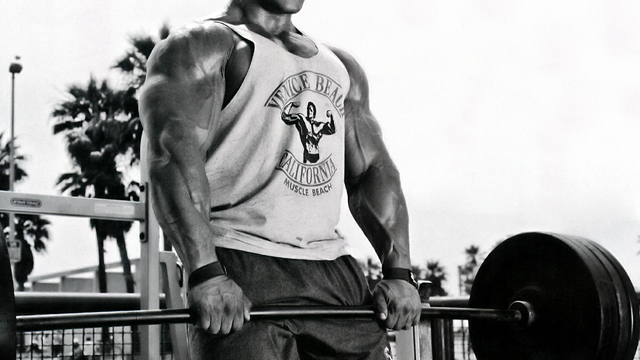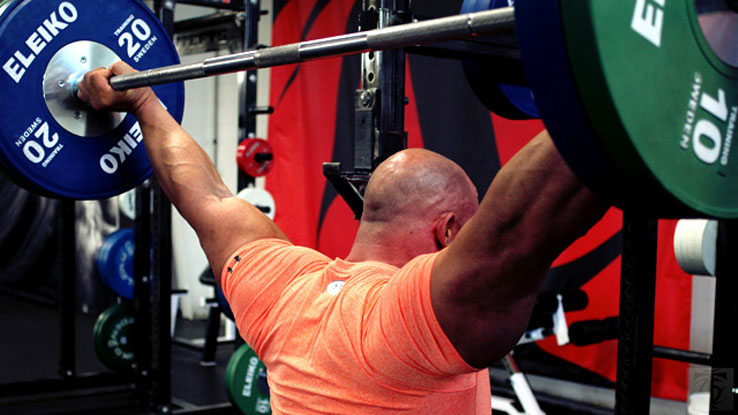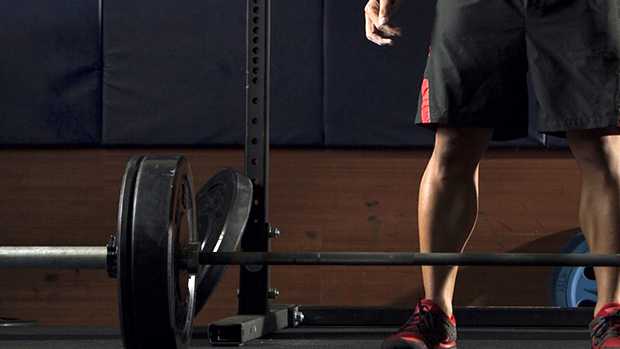Here's what you need to know...
- Strength athletes criticize bodybuilding as an un-athletic beauty contest. Bodybuilders bag on powerlifters for being fat and nutritionally undisciplined. In truth, they can learn a lot from one another about training.
- Even if you're only interested in strength, you still need to apply optimal hypertrophy training methods. If all you care about is looking good naked, you need to utilize optimized strength-training methods.
- The strategies that strength and physique athletes use are almost completely opposite to each other. Strength athletes are looking to find the easiest way to move a weight, while bodybuilders look for the hardest way to move a weight.
- Solution: Start each workout with a core lift that permits a high level of loading. Follow up with 2-4 assistance lifts designed to target weaknesses that the core lift didn't address.
Powerlifters vs. Bodybuilders
For the past few decades, there's been an uneasy coexistence between strength and physique enthusiasts. Strength athletes love to criticize bodybuilding as an un-athletic, drug-fueled, narcissistic beauty contest, while at the same time, bodybuilders often insult powerlifters for being fat and nutritionally undisciplined.
It wasn't always this way. Back in the day, bodybuilding contests usually included a performance requirement, usually in the form of a weightlifting contest. Similarly, many strength historians often remark that strength athletes of yesteryear had more aesthetic physiques than their modern counterparts.
Of course, most of us would love to look and perform like a badass, rather than picking one or the other. But more often than not, many of us assume that we need to choose one or the other. Something about the shortcomings of being a jack of all trades, right?
Take a Lesson From the Other Camp
The truth is, even if you're only interested in strength, you still need to understand and apply optimal hypertrophy training methods in your workouts. Similarly, if all you care about is looking good naked, you won't achieve your true potential unless you understand and utilize optimized strength-training methods.
So the bottom line is that, at least in terms of physical excellence, you really do need to be a jack of at least two trades – strength and hypertrophy training.
Before we delve into this further, it's important to fully appreciate that any time you lift a weight, you'll simultaneously create the stimuli for increased strength and increased muscle development. It's never exclusively one or the other. With that said, it's equally important to recognize that you can substantially emphasize one adaptation over the other based on how you lift that weight. And that's what this article is about.
As someone who's been primarily interested in strength performance over the course of my barbell tenure, I've been almost exclusively focused on the amount of weight I'm lifting – the amount of weight on the bar – as opposed to the feel or the effect the weight is having on the involved muscles. And honestly, this almost exclusive preoccupation with weight has been an oversight on my part, and my physique reflected it, too.
But many bodybuilders make the opposite mistake. They focus mostly or exclusively on generating a high level of fatigue in the target muscle, with little regard of how much weight is being used to create that fatigue.
We'd all be better off if we took a lesson from the opposing camp in an effort to broaden our perspective and shore up our weaknesses. Let's take a look at how we might do that.

Maximizing Strength Depends On Hypertrophy Development
Maximizing strength development requires attention to two distinctly different adaptations: making your muscle fibers thicker, and then creating a stimulus that requires your motor cortex to figure out how to optimally fire your muscles in order to lift a weight.
Simply put, if you only focus on one of these two factors, you're missing out on a lot of untapped potential.
Maximizing Hypertrophy Depends On Strength Development
As coach Eric Helms likes to state, hypertrophy is always a secondary adaptation to strength. What Eric means by this is that you can't hypertrophy a muscle until you recruit it. And of course, recruitment – especially of the high-threshold motor units – requires progressively increasing load in a significant way.
So while "feel" is certainly important, you're not providing your muscles with optimal stimulus for growth if you ignore progressive overload.
Again, no matter what your primary goal is, you really need to make sure you're optimizing both strength and hypertrophy stimuli in your training program. Now what's interesting about the way that strength and physique athletes tend to train is that their strategies are almost completely opposite to each other: Strength athletes are looking to find the easiest way to move a weight, while bodybuilders usually look for the hardest way to move a weight.
As a way of demonstrating this concept, think about the bench press. If your goal is maximal pec development, would you bench differently than you would if a bigger1RM bench was your goal? The clear answer is yes.
Obviously, if your goal is a big max-bench, you'd find every possible way to "cheat." You'd reduce the ROM (range of motion), incorporate leg drive as much as possible, use the easiest eccentric tempo, and so on. In other words, you'd look for the easiest possible way to make that lift.
On the other hand, a bodybuilder concerned with pec development would take a very different approach. He'd increase the ROM, use a longer eccentric tempo, and in short, do everything possible to create maximal fatigue in his pecs, even if it made any given weight harder to move. Put another way, he'd be looking to find the hardest possible way to lift that weight, particularly for the pecs.
So who's right and who's wrong here then? Both approaches are valid, and in fact, necessary for optimal progress!
Putting It All Together: An Integrated Model
As an athlete involved in raw powerlifting, I've stumbled upon a strategy that allows me to address both of these inter-related needs in my own training. And truth be told, there's nothing especially "new" to this approach, which probably makes me like it even more.
Each workout starts with a "core" lift, which for me will be one of the three power lifts. For you, it could be any "big" multi-joint or "compound" lift that permits a high level of loading. Examples include barbell rows, Dead-Squat® Bar pulls, military presses, and power cleans.
On each core lift, I'm looking to optimize my mechanics in such a way that I'm using the easiest possible way to complete the lift, and I'll usually use fairly heavy (over 85% of 1RM) weights for relatively low (1-5) reps.
After you perform the core lift – using loading parameters conducive to maximal strength and/or power development – you follow up with 2-4 "assistance" lifts designed to target weaknesses that the core lift didn't adequately address. So in my case, squats don't happen to address my quads very well, which happens to be a weakness both in my squatting as well as my physique.
Therefore, I'll choose an exercise that targets this muscle as effectively as possible, and I'll use a bodybuilding mindset while performing this exercise, focusing not so much on the weight I'm lifting (although I still try to progress my loads from session to session), but rather on generating fatigue in the muscle throughout a full range of motion.
In terms of loading on these secondary exercises, I sometimes use the same weight for several sets, but more typically, I'll use something like ladders, Stack 10, or a simple ascending pyramid, working up to a difficult set of 6-8 reps, followed by 1-2 lighter back-off sets. Don't get too hung up on the specific loading strategy here, however, as it's the movement style that's most important.
Look Strong and Be Strong
Now while this approach certainly isn't anything new from a programming point of view, what is a bit different is the use of goal-specific movement strategies for both categories of exercise. On the core movement you'll be using a high-tension strategy, and on the assistance lifts you'll switch to more of a fatigue-generation approach.
In this way, you more fully satisfy the requirements for maximal strength development, as well as optimizing the stimulus for muscular growth.




